Abstract
This paper describes the specificity of delayed-type hypersensitivity (DH) and antibody formation in the mouse to the tripeptide-enlarged hapten, 3-(p-azobenzenearsonate)-N-acetyl-L-tyrosylglycylglycine (A). Hapten A was coupled to phosphatidylethanolamine (PE) and incorporated into liposomal membranes (A-PE-liposomes). DH was measured as footpad swelling and antibody formation by the enumeration of direct plaque-forming cells in the spleen. A-PE-liposomes mixed with the cationic, surface-active lipid, dimethyl dioctadecyl ammonium bromide (DDA) induce, on intracutaneous injection in mice, hapten-specific DH without a contribution by the carrier. With other haptenated liposomes it was not possible to induce DH to those haptens, including the closely related hapten 3-(p-azobenzenesulphonate)-N-acetyl-L-tyrosylglycylglycine (S). A-PE- and S-PE-liposomes evoke, after intravenous injection in mice, a humoral response. The antibody formation to A-PE-liposomes was thymus-independent. In this response a considerable cross reaction between haptens A and S was observed.
Full text
PDF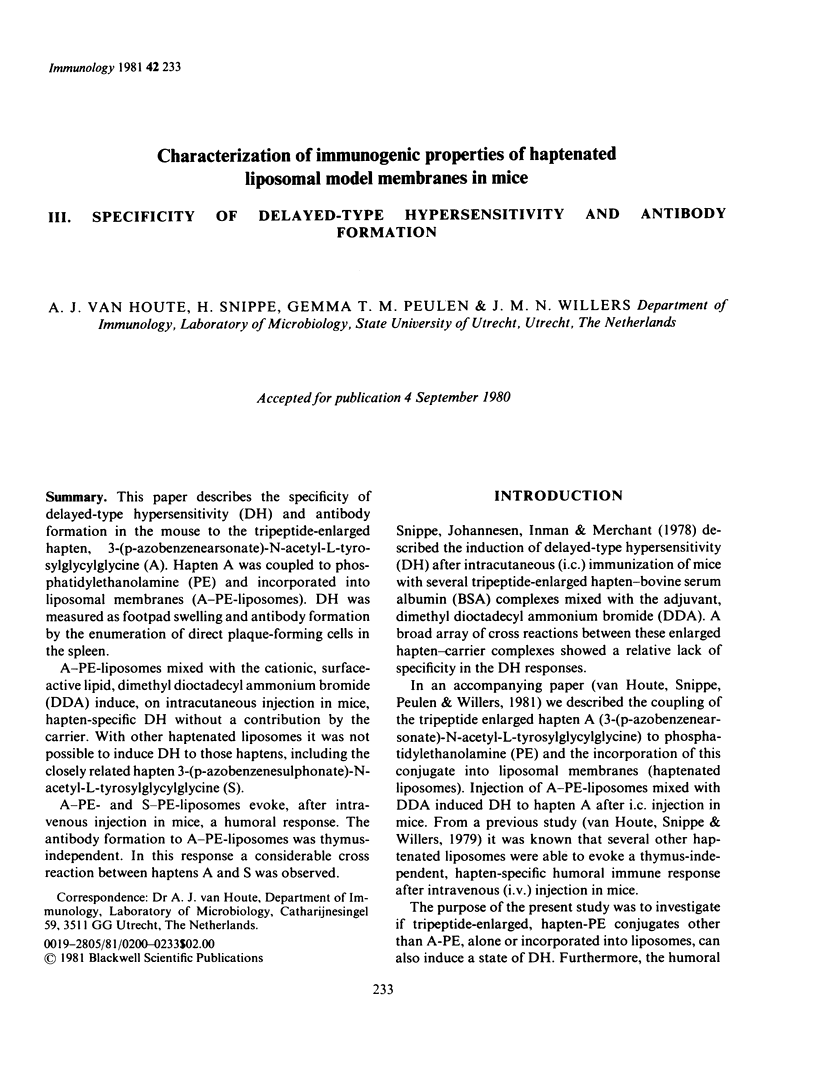
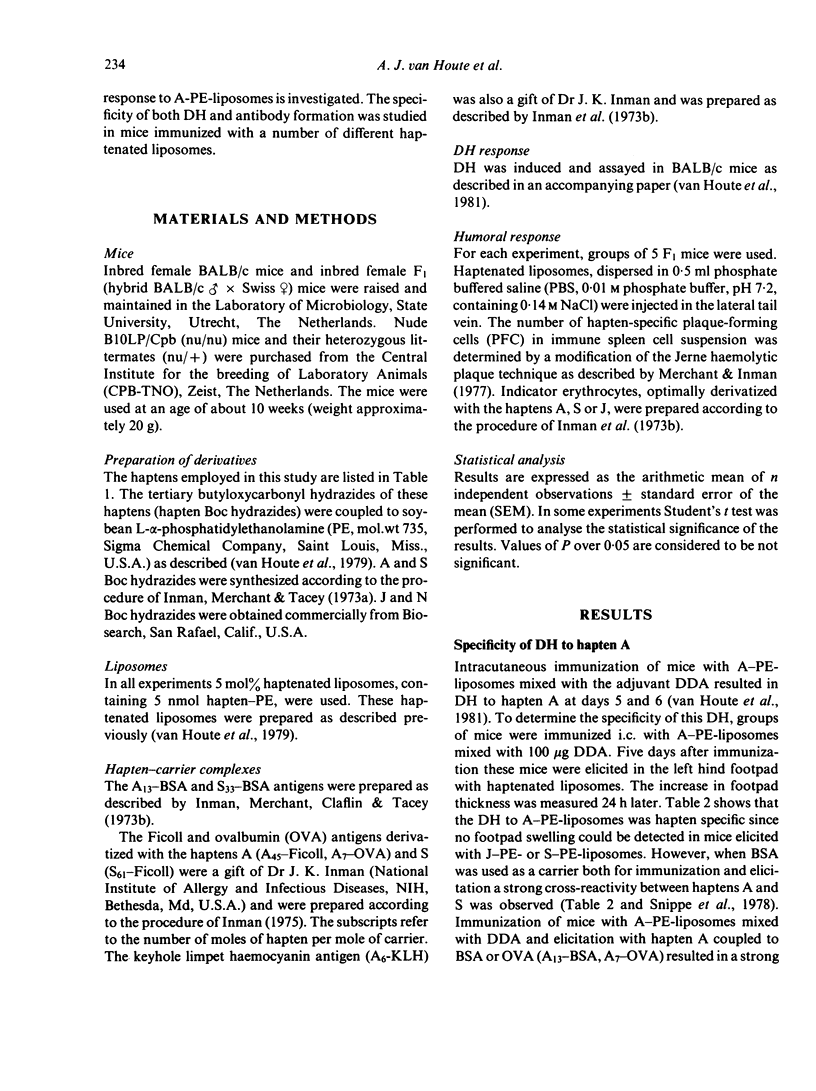
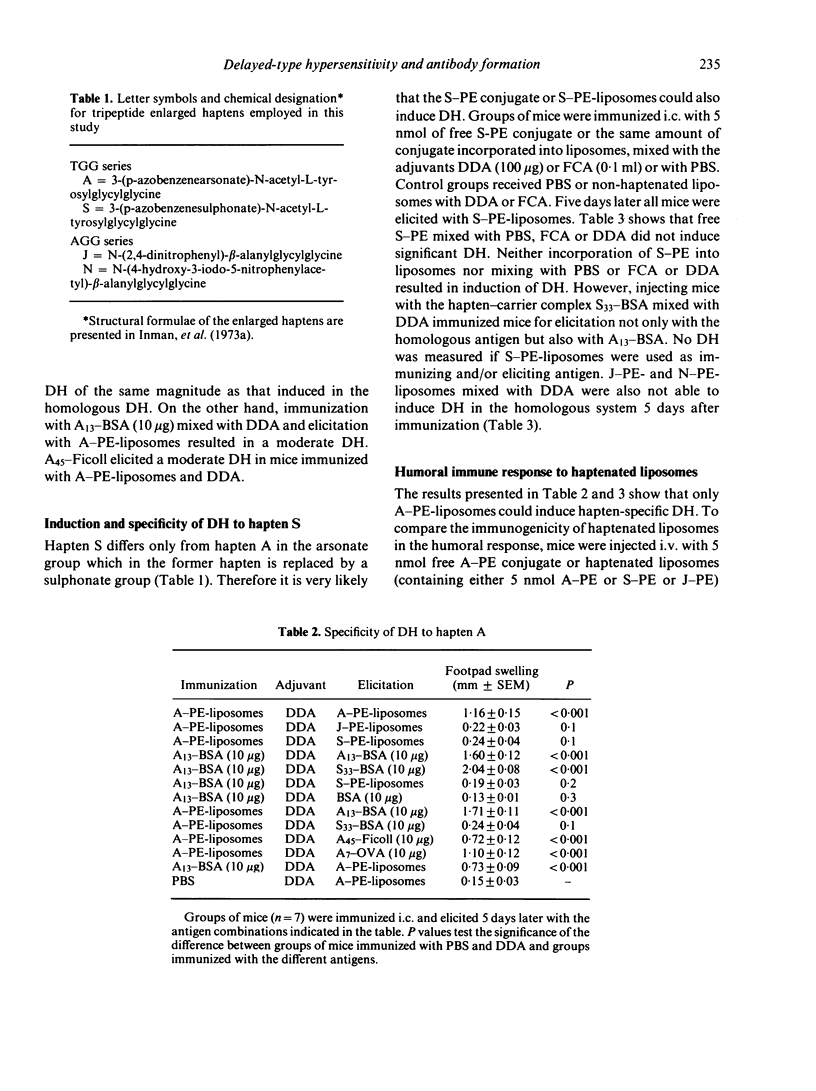
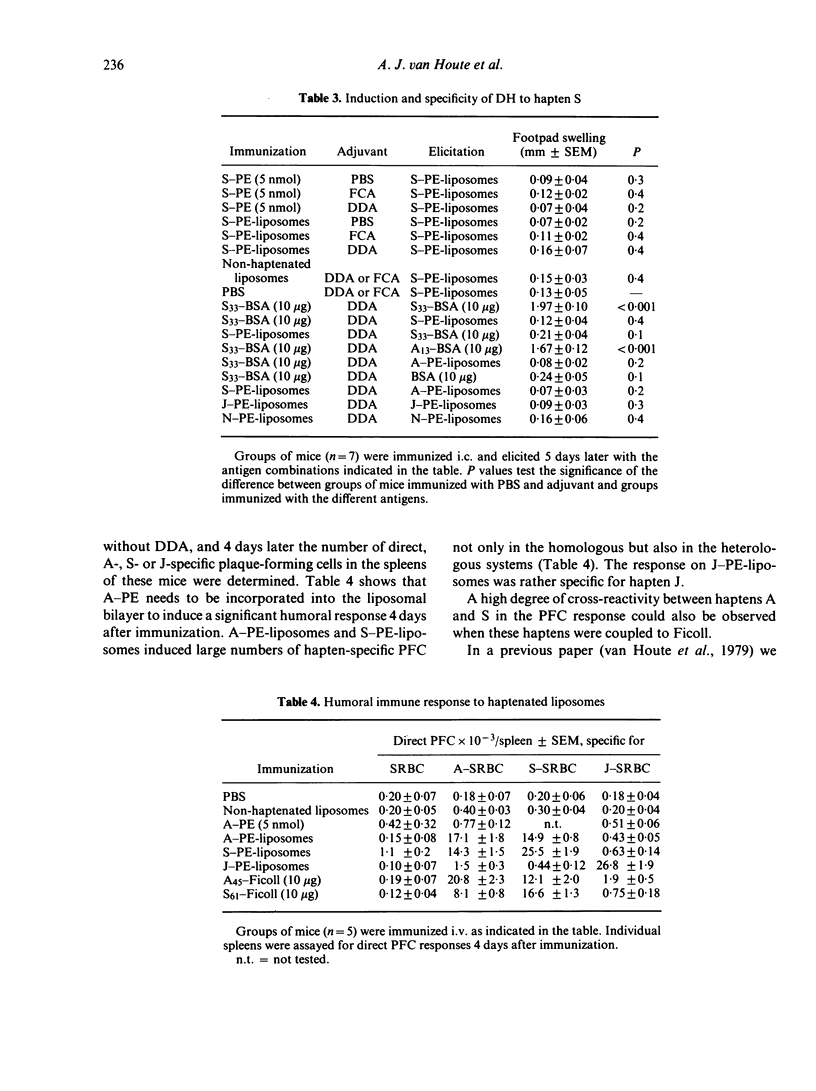
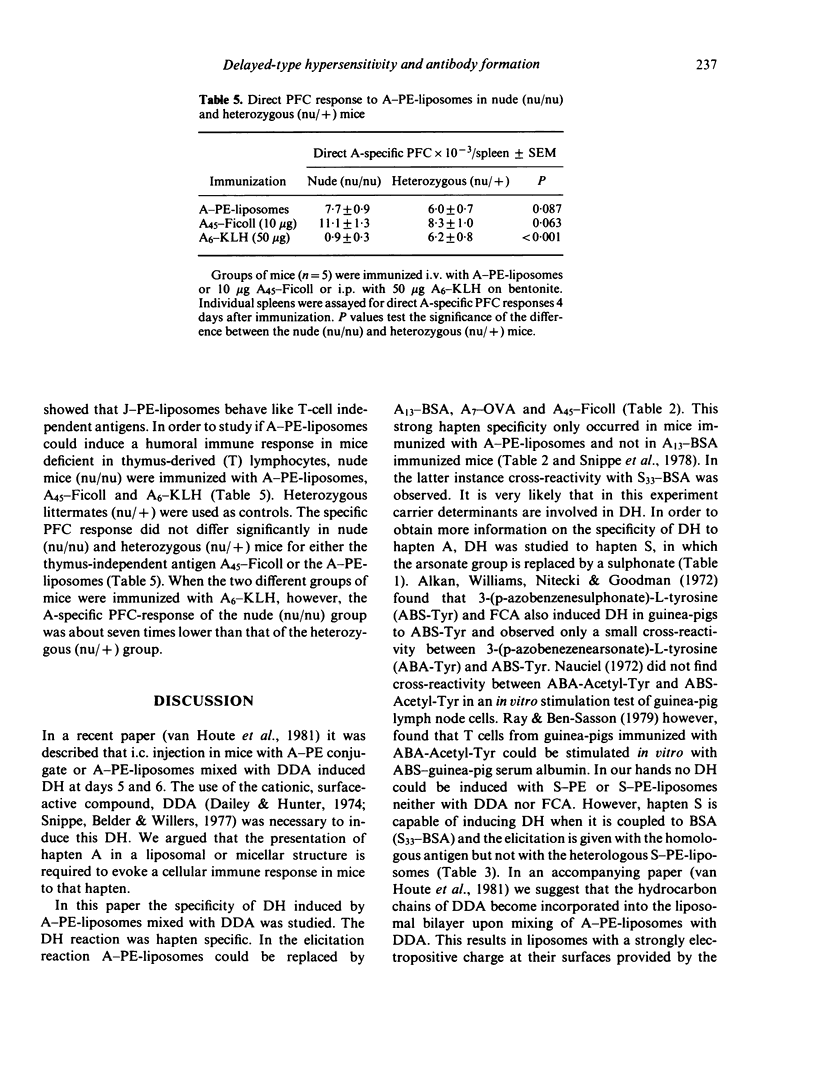
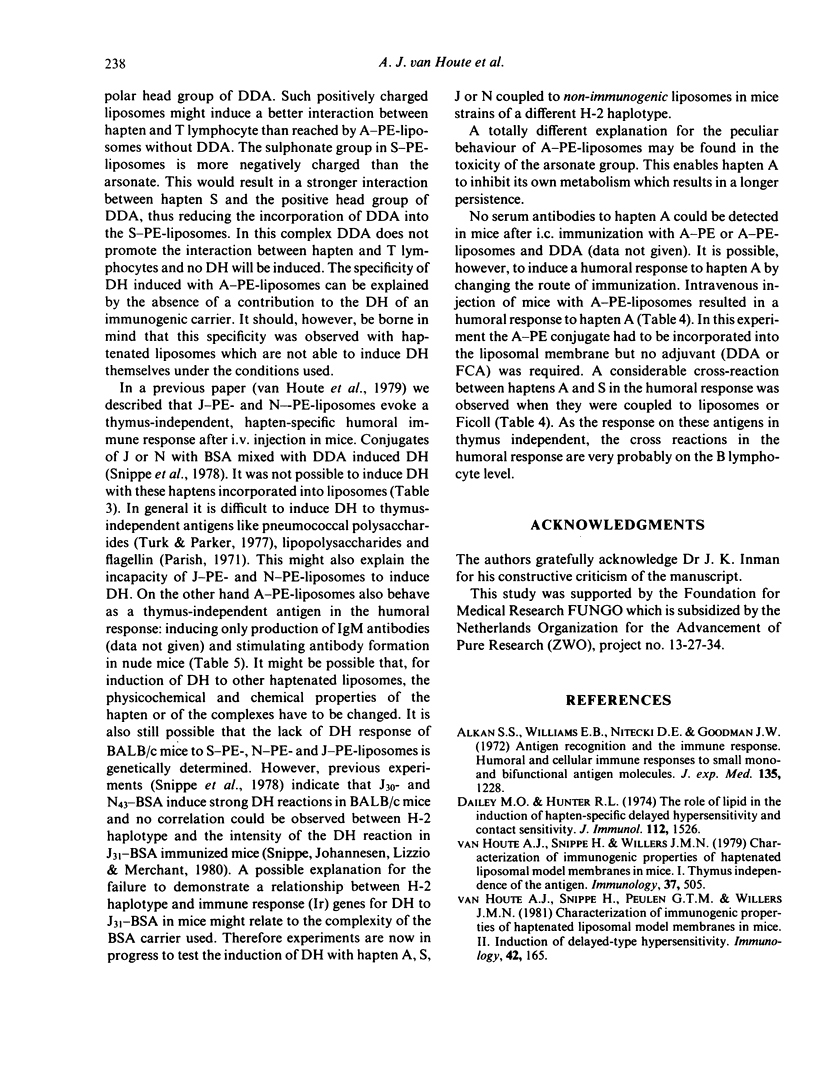
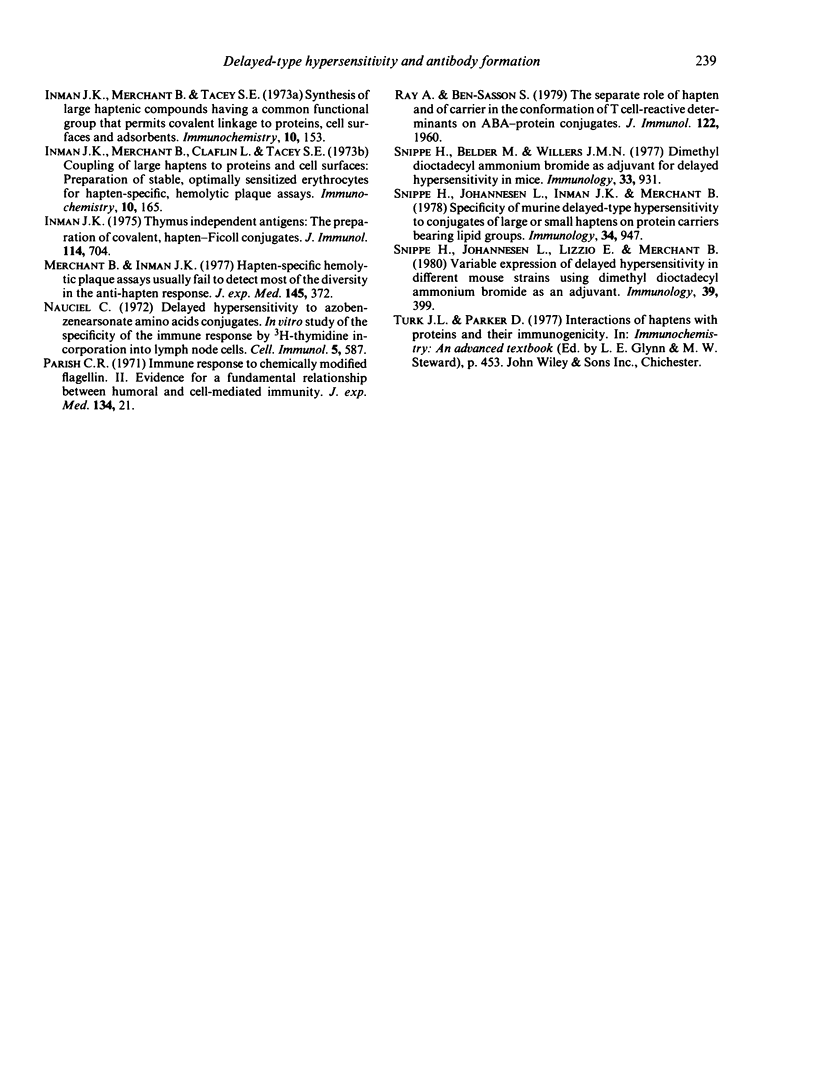
Selected References
These references are in PubMed. This may not be the complete list of references from this article.
- Alkan S. S., Williams E. B., Nitecki D. E., Goodman J. W. Antigen recognition and the immune response. Humoral and cellular immune responses to small mono- and bifunctional antigen molecules. J Exp Med. 1972 Jun 1;135(6):1228–1246. doi: 10.1084/jem.135.6.1228. [DOI] [PMC free article] [PubMed] [Google Scholar]
- Dailey M. O., Hunter R. L. The role of lipid in the induction of hapten-specific delayed hypersensitivity and contact sensitivity. J Immunol. 1974 Apr;112(4):1526–1534. [PubMed] [Google Scholar]
- Inman J. K., Merchant B., Claflin L., Tacey S. E. Coupling of large haptens to proteins and cell surfaces: preparation of stable, optimally sensitized erythrocytes for hapten-specific, hemolytic plaque assays. Immunochemistry. 1973 Mar;10(3):165–174. doi: 10.1016/0019-2791(73)90005-0. [DOI] [PubMed] [Google Scholar]
- Inman J. K., Merchant B., Tacey S. E. Synthesis of large haptenic compounds having a common functional group that permits covalent linkage to proteins, cell surfaces, and adsorbents. Immunochemistry. 1973 Mar;10(3):153–163. doi: 10.1016/0019-2791(73)90004-9. [DOI] [PubMed] [Google Scholar]
- Inman J. K. Thymus-independent antigens: the preparation of covalent, hapten-ficoll conjugates. J Immunol. 1975 Feb;114(2 Pt 1):704–709. [PubMed] [Google Scholar]
- Merchant B., Inman J. K. Hapten-specific hemolytic plaque assays usually fail to detect most of the diversity in the anti-hapten response. J Exp Med. 1977 Feb 1;145(2):372–389. doi: 10.1084/jem.145.2.372. [DOI] [PMC free article] [PubMed] [Google Scholar]
- Nauciel C. Delayed hypersensitivity to azobenzenearsonate amino acids conjugates. In vitro study of the specificity of the immune response by 3 H-thymidine incorporation into lymph node cells. Cell Immunol. 1972 Dec;5(4):587–592. doi: 10.1016/0008-8749(72)90109-8. [DOI] [PubMed] [Google Scholar]
- Parish C. R. Immune response to chemically modified flagellin. II. Evidence for a fundamental relationship between humoral and cell-mediated immunity. J Exp Med. 1971 Jul 1;134(1):21–47. doi: 10.1084/jem.134.1.21. [DOI] [PMC free article] [PubMed] [Google Scholar]
- Ray A., Ben-Sasson S. The separate roles of hapten and of carrier in the conformation of T cell-reactive determinants on ABA-protein conjugates. J Immunol. 1979 May;122(5):1960–1966. [PubMed] [Google Scholar]
- Snippe H., Belder M., Willers J. M. Dimethyl diotadecyl ammonium bromide as adjuvant for delayed hypersensitivity in mice. Immunology. 1977 Dec;33(6):931–936. [PMC free article] [PubMed] [Google Scholar]
- Snippe H., Johannesen L., Inman J. K., Merchant B. Specificity of murine delayed-type hypersensitivity to conjugates of large or small haptens on protein carriers bearing lipid groups. Immunology. 1978 May;34(5):947–954. [PMC free article] [PubMed] [Google Scholar]
- Snippe H., Johannesen L., Lizzio E., Merchant B. Variable expression of delayed hypersensitivity in different mouse strains using dimethyl dioctadecyl ammonium bromide as an adjuvant. Immunology. 1980 Mar;39(3):399–405. [PMC free article] [PubMed] [Google Scholar]
- van Houte A. J., Snippe H., Peulen G. T., Willers J. M. Characterization of immunogenic properties of haptenated liposomal model membranes in mice. II. Induction of delayed-type hypersensitivity. Immunology. 1981 Jan;42(1):165–173. [PMC free article] [PubMed] [Google Scholar]
- van Houte A. J., Snippe H., Willers J. M. Characterization of immunogenic properties of haptenated liposomal model membranes in mice. I. Thymus independence of the antigen. Immunology. 1979 Jun;37(2):505–514. [PMC free article] [PubMed] [Google Scholar]


